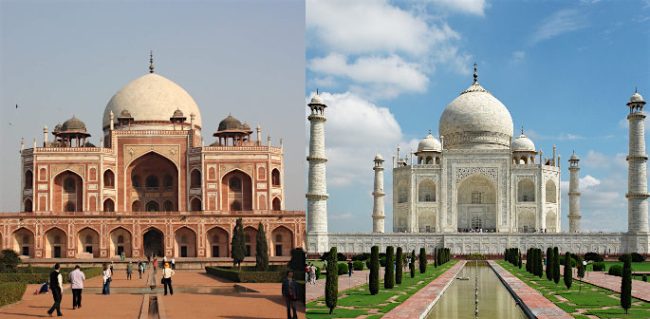
Hidden Stories in Mughal Architecture: A Unique Blend of Persian and Indian Heritage
Mughal-era architecture is not merely limited to grand palaces, mosques, or mausoleums — every brick and intricate carving tells a story of a bygone era. Mughal architecture represents a remarkable fusion of Islamic, Persian, and Indian architectural traditions, giving rise to a distinct style known as “Mughal art“, which flourished in the Indian subcontinent from the 16th to 17th century.
The Grandeur of the Dome: A Mughal Legacy
One of the defining features of Mughal architecture is the extensive use of domes. Prior to the Mughals, domes were not a prominent feature in Indian architecture. This element was brought from Baghdad, where it was a significant aspect of Islamic design. The Mughals introduced the dome not only as a structural component but also as a symbol of spiritual and political power.
The Evolution of Mughal Architecture
The Mughal Empire began with Babur’s victory in the First Battle of Panipat in 1526. Although his reign lasted only five years, Babur introduced Persian-style garden architecture in Delhi and Agra, laying the foundation for future developments.

It was under Emperor Akbar (1556–1605) that Mughal architecture reached a significant phase of growth. His contributions include iconic structures like Agra Fort, Fatehpur Sikri, and the Buland Darwaza. These constructions showcase a blend of Rajput and Gujarati styles, reflecting Akbar’s inclusive approach and collaboration with local artisans.
His son Jahangir was less focused on monumental architecture but showed deep interest in landscape and garden design. His most notable contribution was the Shalimar Bagh in Kashmir.
The architectural zenith came under Shah Jahan, whose reign witnessed the creation of masterpieces such as the Taj Mahal, Red Fort in Delhi, and Jama Masjid — all epitomes of symmetry, balance, and refined elegance.
Mughal Legacy Across South Asia
Mughal architectural marvels are scattered across modern-day India, Pakistan, Bangladesh, and Afghanistan. From the Lalbagh Fort in Dhaka, the Lahore Fort, and Babar’s Garden in Kabul, to Humayun’s Tomb in Delhi, these structures bear witness to the rich artistic and historical legacy of the empire.
More Than Just Bricks and Mortar
Mughal architecture is not just an artistic achievement; it is a cultural, spiritual, and political chronicle of the subcontinent. These monuments are not merely relics of the past — they represent the subcontinent’s architectural prowess and continue to inspire the world with their grandeur and craftsmanship.
